 |
||
|
The Search for Cosmic Strings |
||
|
Background and Motivation
Symmetry breaking
Symmetry breaking is characterized by phase transitions as matter changes to a less symmetric state. The phase transitions that occurred in the early universe are analogous to those of water. When liquid water has cooled significantly, it freezes into solid ice. Note that the liquid phase is more symmetric than the solid phase: in the liquid every direction is equivalent, but as the water freezes the molecules assemble into a crystal structure, and this directional symmetry is broken. Similarly, as the early universe expanded and cooled, it experienced a series of phase transitions.
GUT Cosmic Strings GUT Cosmic strings (predicted in some Grand Unified Theories) are an example of a topological defect that can result from the symmetry breaking at 10-35 seconds after the Big Bang. As spontaneous symmetry breaking occurred, the Higgs field takes on different orientations in unconnected regions of space. Along the boundaries, between these differently oriented regions of space, the previous vacuum energy (or phase) is trapped, and a defect is formed. In the case of a cosmic string, mass-energy is concentrated in a long, narrow strand with a radius a trillion times smaller than that of a hydrogen atom.
The figure above demonstrates the evolution of the complex scalar Higgs field. On the left, the temperature dependent potential V(ø) for high temperatures is indicated by the violet surface; the potential at lower temperatures is represented by the yellow surface, and takes the form of the “Mexican hat”. For each of the two fields, the vacuum expectation value resides in the trough of the potential. As different regions of the space transit from the higher temperature violet potential (indicated by the grey ball) to the lower temperature yellow potential (red or green balls), an arbitrary direction for the phase of the field is chosen. As indicated by the physical space diagram on the right, these random orientations do not always line up; along these boundaries a cosmic string will form (red balls/lines).
Candidate Pairs
Gravitational Lensing by a Cosmic String A cosmic string cuts out from flat space time a deficit angle
The field above shows two simulated cosmic strings at redshifts z=1.0 (dash) and z=0.5 (solid), placed in the GOODS’ Hubble Deep Field North, section 33. The red and yellow circles identify lensed pairs that result from the string. A string can be detected by finding identical pairs that follow the line of the string. Detection Method
Our method for cosmic string detection involves finding pairs of similar galaxies, an indication of lensing by a string. Similarity can be measured by comparing ellipticities [a], angles of inclination [b], redshifts [c], and fluxes [d] of pairs of objects. Images from the Great Observatories Origins Deep Survey (GOODS) were searched for pairs. This survey used the Hubble Space Telescope to observe the Hubble Deep Field North and the Chandra Deep Field South.
The accuracy of the images obtained by the Hubble Space Telescope is limited by the pixelization of the digital images. Depending on their placement within the pixels, two identical objects won’t necessarily produce identical images, as illustrated below.
Correlation of fluxes is described by c1, while shapes (ellipticity and angle of inclination) are described by c2. The plots on the left show the distributions expected as background, obtained by correlating many random galaxies. The plots on the right display the expected signal from identical galaxies, obtained by correlating galaxies with their smoothed and re-realized counterparts.
Conclusions
|
||
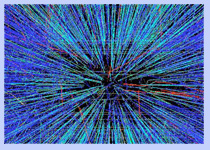 Cosmic strings are hypothetical remnants of the early universe whose formation is a predicted result of spontaneous symmetry breaking. Detectable cosmic strings, which are on an energy scale of ~1015 GeV, may have formed during symmetry breaking that occurred in certain Grand Unified Theories (GUT) or at the end of inflation. Proof of their existence would excite both particle physicists and astronomers, as strings could connect us directly with exotic matter and conditions of the moments right after the big bang.
Cosmic strings are hypothetical remnants of the early universe whose formation is a predicted result of spontaneous symmetry breaking. Detectable cosmic strings, which are on an energy scale of ~1015 GeV, may have formed during symmetry breaking that occurred in certain Grand Unified Theories (GUT) or at the end of inflation. Proof of their existence would excite both particle physicists and astronomers, as strings could connect us directly with exotic matter and conditions of the moments right after the big bang.
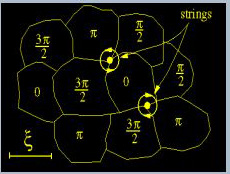 Ice forming on a lake does not freeze uniformly, but in independent patches creating irregular boundaries, or cracks, between the regions. The formation of these cracks is analogous to the formation of topological defects in the early universe. Cosmic strings are linear topological defects; they are theorized to have formed when axial symmetry was broken. Trapped within these “liquid cracks” is the previous phase of the universe.
Ice forming on a lake does not freeze uniformly, but in independent patches creating irregular boundaries, or cracks, between the regions. The formation of these cracks is analogous to the formation of topological defects in the early universe. Cosmic strings are linear topological defects; they are theorized to have formed when axial symmetry was broken. Trapped within these “liquid cracks” is the previous phase of the universe. 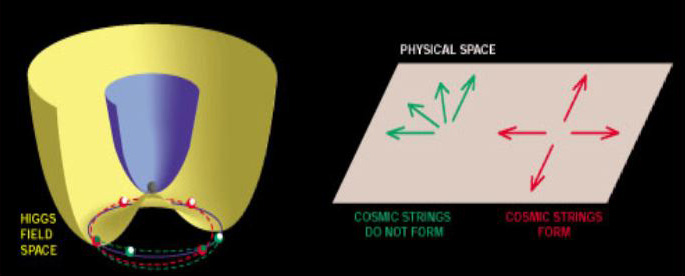
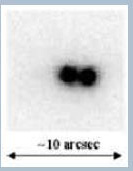
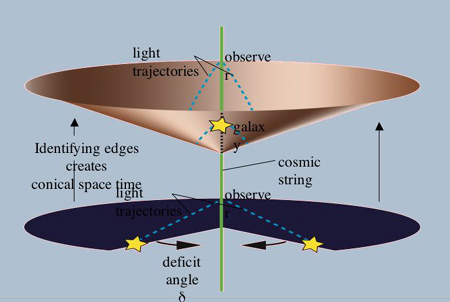
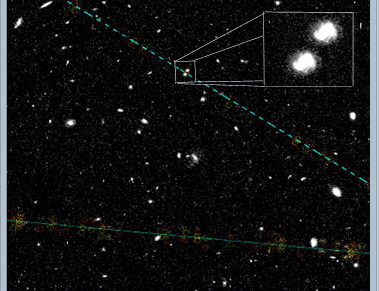
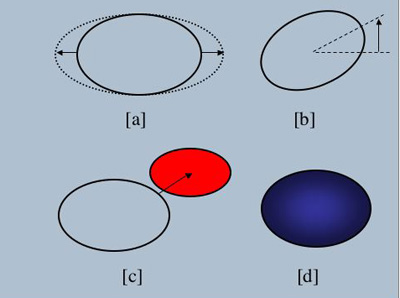
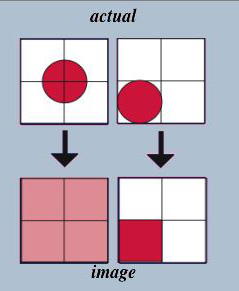
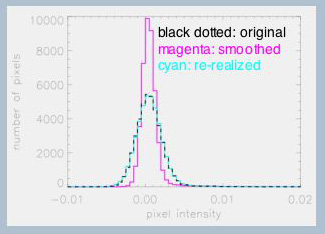

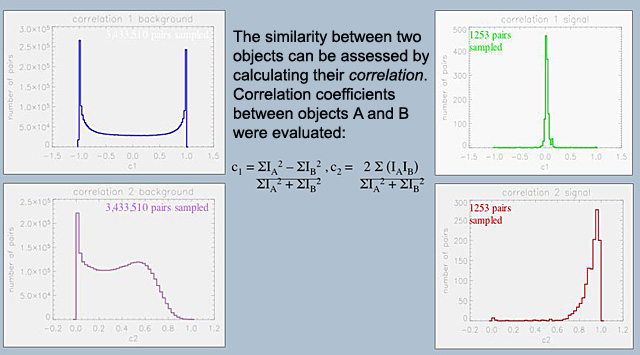
 We have not yet found a cosmic string of energy scale 1015 GeV and longer than 10” within the GOODS fields. However, this does not rule out the existence of cosmic strings. GOODS only covered a fraction of the sky, with 123 arcmin2 in the north field and 140 arcmin2 in the south field. More wide-field surveys can be searched for strings using this technique of finding pairs of galaxies that are morphologically similar.
We have not yet found a cosmic string of energy scale 1015 GeV and longer than 10” within the GOODS fields. However, this does not rule out the existence of cosmic strings. GOODS only covered a fraction of the sky, with 123 arcmin2 in the north field and 140 arcmin2 in the south field. More wide-field surveys can be searched for strings using this technique of finding pairs of galaxies that are morphologically similar. 
